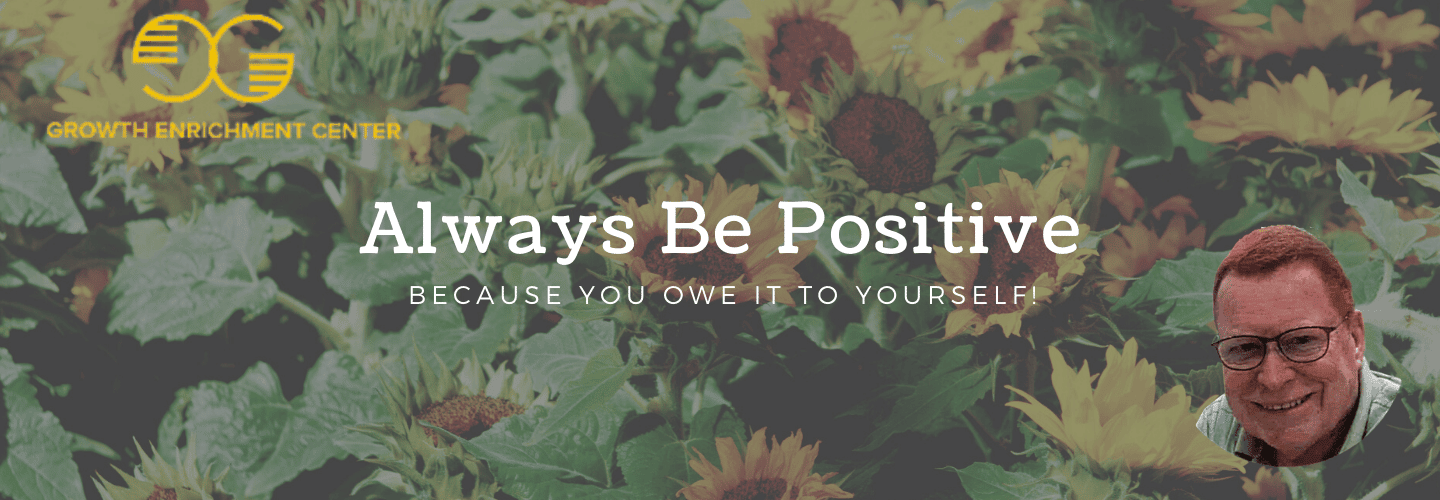
Start your day with morning gratitude journaling to set a positive tone, and engage in guided breathing exercises to calm your mind. Adopt mindful eating habits to fully enjoy your meals and enhance digestion. Daily walking meditation can ground you, while positive affirmations help shift your mindset to see the potential in every day. Don't overlook the benefits of a body scan before sleep to guarantee a restful night. By also cultivating a connection with nature, you'll increase your mental clarity. Implement these well-rounded practices consistently, and you'll notice a profound shift in your emotional resilience. These insights are just the beginning of transforming your daily routine into a sanctuary of positivity.
Key Takeaways
- Start each day with morning gratitude journaling to focus on positive aspects of life.
- Engage in guided breathing exercises to center thoughts and reduce stress.
- Take observational mindfulness breaks throughout the day to reconnect with the present moment.
- Practice empathetic listening in conversations to enhance interpersonal relationships.
- End the day with an evening reflection ritual to acknowledge daily achievements and set intentions.
Morning Gratitude Journaling
Starting your day with morning gratitude journaling can truly transform your outlook. As you begin each day, take a moment to practice mindfulness by reflecting on the things you're thankful for. This simple act not only sets a positive tone for your day but also encourages you to focus on the good in your life. By acknowledging these blessings, no matter how small, you're cultivating a mindset that appreciates life's gifts.
Morning gratitude journaling isn't just about feeling good in the moment; it's a practice that builds over time. Research shows that consistently recognizing what you're grateful for improves your mood and enhances your overall well-being. It's like training your mind to see light even on cloudy days, fostering resilience against stress and negativity.
Here's a tip to make the most of this practice: keep a dedicated gratitude journal by your bedside. Each morning, write down three things you're grateful for. They could be as simple as a sunny day, a good cup of coffee, or a supportive friend. This habit not only helps you start your day on a positive note but also deepens your engagement with life's beautiful details, enhancing your journey toward mental health and happiness.
Guided Breathing Exercises

You might already know that guided breathing exercises are a powerful tool for calming your mind and easing stress. By learning popular breathing techniques, you can harness these benefits and start to feel more relaxed and centered throughout your day.
It's really straightforward to incorporate this practice into your daily routine, offering you a quick way to reset and boost your emotional well-being.
Benefits of Guided Breathing
Exploring the benefits of guided breathing exercises can profoundly impact your daily life, notably in managing stress and anxiety. When you engage in this practice, you're not just inhaling and exhaling; you're participating in a form of meditation that brings your attention to the present moment. It's a simple yet powerful tool to quiet the mind and foster tranquility.
Guided breathing helps you follow a specific pattern that maximizes relaxation. This controlled process allows you to step away from daily chaos and refocus your energies. As you concentrate on each breath, you'll notice a shift in your mental state, moving from a feeling of stress to one of calm. This isn't just a temporary relief but a step towards better emotional regulation and increased self-awareness.
Incorporating these exercises into your daily routine can notably enhance your focus and concentration. Over time, the regular practice of guided breathing can lead to improved psychological health, making you feel more grounded and resilient. Remember, it's not about perfection but progress. With each breath, you're building a stronger, more aware version of yourself, capable of tackling whatever comes your way.
Popular Breathing Techniques
Building on the foundational skills of guided breathing, it's important to highlight some popular techniques that can further enhance your mindfulness practice. Let's explore a couple of deep breathing techniques that you can incorporate into your daily routine to manage stress effectively.
Firstly, consider the box breathing method. This entails breathing in for four counts, holding your breath for four counts, exhaling for four counts, and holding again for four counts. This pattern helps regulate your nervous system and brings a profound sense of calm.
Another powerful technique is the 4-7-8 breathing exercise. You'll breathe in deeply for four seconds, hold your breath for seven seconds, and then exhale slowly for eight seconds. This method is particularly effective in reducing anxiety and helping you to focus better.
Both of these techniques can be practiced anywhere and at any time, making them perfect for daily use. They not only promote relaxation but also improve your concentration and emotional regulation. By incorporating these exercises into your routine, you're setting a foundation for a more relaxed and positive mindset. Remember, the key is consistency to truly reap the benefits of guided breathing.
Implementing Daily Practice
To start integrating guided breathing exercises into your daily life, selecting a specific time and place that aligns with your routine is essential. Consistency is key in establishing any new habit, especially one as beneficial as a daily mindfulness practice. You might find early morning before the day ramps up, or evening time as you wind down, to be ideal moments for this practice.
Incorporating these exercises won't only reduce stress but also enhance your ability to regulate emotions more effectively. Imagine being able to handle life's ups and downs with a greater sense of calm and resilience. That's the power of regular guided breathing exercises. They help you focus and increase concentration, which in turn, improves your productivity and overall satisfaction with life.
Start with just a few minutes each day, and gradually increase the duration as you become more comfortable with the practice. Remember, the goal is to promote self-awareness and mindfulness, leading to an overall sense of well-being and positivity. This small step could be your path to a happier and more balanced life. So, why not give it a try starting today?
Mindful Eating Habits

As you explore mindful eating, you'll discover not just the joy of truly tasting your food, but also the benefits it brings to your health and well-being.
By learning techniques like focusing on the texture and aroma of each bite, you can enhance your digestion and control portions more effectively.
However, it's important to acknowledge that integrating these practices consistently can be challenging, yet with persistence, the rewards are substantial.
Benefits of Mindful Eating
Incorporating mindful eating into your daily routine can profoundly transform your relationship with food, leading to numerous health benefits. When you practice mindful eating, you're not just eating; you're paying full attention to the experience. This focus helps you develop healthier eating habits, as you become acutely aware of what and how much you're consuming.
By tuning into your body's hunger and fullness cues, you're less likely to overeat or engage in emotional eating. This awareness allows you to stop eating based on emotions and start eating based on actual physical needs. It's a powerful step towards maintaining a healthy weight and fostering a positive mindset about food and body image.
Moreover, mindful eating enhances your digestion and nutrient absorption. Eating slowly and without distractions maximizes the efficiency of your digestion, helping your body derive more nutrients from the food you consume.
You'll notice a decrease in digestive discomfort and an increase in energy levels.
Common Mindful Techniques
Exploring common mindful techniques can greatly improve your eating habits and transform your mealtime experiences. Mindful eating, a form of mindfulness meditation, encourages you to fully engage with the present moment while eating. This means focusing on the colors, textures, and flavors of your food, which can enhance your appreciation and satisfaction.
Start by serving yourself smaller portions and sitting down in a quiet, comfortable place. Before you begin eating, take a few deep breaths to center yourself. Engage in a quick Body Scan by noticing any physical sensations or emotions that arise, without judgment. This helps you connect with your current state of hunger or fullness.
Chew slowly, savoring each bite. Pay attention to the crunch, the smoothness, or the spice. Notice how your body reacts. Does the food bring you comfort? Are you still hungry, or are you getting full? By tuning into these cues, you're practicing the benefits of mindfulness, which include better digestion and reduced overeating.
Challenges in Practice
While mindful eating has many benefits, you might find it challenging to maintain these habits consistently. It's common to feel overwhelmed by the demands of daily life, making it tough to always pay attention to the taste, texture, and aroma of your food. Remember, practicing mindfulness during meals is a skill that improves with time and patience.
One major hurdle is the distraction of technology and fast-paced lifestyles. To counter this, try to create a calm eating environment, free of electronics. This simple step can notably enhance your focus and enjoyment of meals.
Additionally, the habit of eating quickly is often ingrained from a young age. Slowing down to savor each bite might initially feel unnatural but stick with it. The rewards of better digestion and increased meal satisfaction are well worth the effort.
Another aspect of mindful eating is making conscious food choices. This can be complicated in a world full of easy, unhealthy options. Start small by incorporating more whole foods into your diet and observing how they affect your body and mind.
Daily Walking Meditation

Amid the hustle of daily life, taking time out for a daily walking meditation can be a transformative practice that helps center your thoughts and calms your mind. As you step outside, allow each movement to ground you in the present moment, combining the benefits of physical activity with the mindfulness of meditation.
Walking meditation isn't just a stroll through the park; it's an intentional act of tuning into each step, feeling the earth beneath your feet, and breathing in sync with your stride. This practice can notably reduce stress and enhance your mental clarity. You'll find that with each step, the weight of your worries begins to lighten, making space for a refreshed perspective.
Start by choosing a quiet, comfortable route where you can walk without much interruption. As you walk, focus on the sensations in your body and the environment around you. Notice the texture of the ground, the rhythm of your breath, and the sounds that drift around you. This attentiveness fosters a deep sense of presence, boosting your overall well-being.
Regularly engaging in walking meditation enriches your daily life, helping you become more mindful and focused. It's a simple yet powerful tool to weave into your routine for lasting positive change.
Positive Affirmations Practice

Often, we underestimate the power of the words we repeat to ourselves. Positive affirmations aren't just feel-good quotes or motivational posters; they're tools that can profoundly influence how we see ourselves and our capabilities. By consciously choosing to affirm our strengths and aspirations, we can reshape our internal dialogues and foster a nurturing mindset.
Imagine starting each day by affirming, "I am capable and resilient," or "I embrace challenges as opportunities to grow." These aren't just optimistic words; they're declarations that set the tone for positive thinking and self-belief. Research supports this practice, showing that positive affirmations can significantly boost self-confidence and reduce stress.
This happens because you're actively countering the negative thoughts that often invade our minds, thereby reprogramming our thought patterns towards more constructive and empowering beliefs.
To integrate this practice effectively, make it a daily habit. Find phrases that resonate deeply with you and align with your true values and goals. Repeat them during your morning routine, write them on sticky notes around your workspace, or recite them during stressful times.
You'll likely find that with consistent use, these affirmations not only uplift your spirits but also strengthen your resolve and overall optimism.
Observational Mindfulness Breaks

Taking a moment to observe your surroundings can greatly enhance your mindfulness and help anchor you in the present moment. Observational mindfulness breaks are simple yet powerful mindfulness exercises that allow you to connect deeply with the here and now. You can practice these breaks anywhere—be it at your desk, in a park, or in the quiet corner of a café.
Start by focusing on what you can see, hear, and feel around you. Notice the colors, the patterns, or the movement of objects. Listen to the sounds that usually fade into the background—the hum of traffic, the chirping of birds, or the distant chatter. Feel the air on your skin or the texture of the material you're touching. Each observation brings you back to the present and away from the clutter of thoughts about past or future.
Incorporating these observational mindfulness breaks into your daily routine isn't just a pause; it's a rejuvenation. They reduce stress, enhance your focus, and notably improve your overall wellbeing.
As you practice, you'll find yourself becoming more present, more aware, and more positive throughout your day. Let these breaks be your stepping stones to a more mindful life.
Evening Reflection Ritual

As your day winds down, setting aside time for an evening reflection practice can transform the way you process your daily experiences. This practice isn't just about rehashing events but about fostering a deeper sense of self-awareness. By taking a few minutes each night to reflect, you're not only acknowledging the day's ups and downs but also paving the way for personal growth and emotional resilience.
Begin by finding a quiet spot where you can relax without interruptions. You might sit comfortably with a journal or simply close your eyes and let your mind wander through the day's events. Focus on the feelings each memory evokes, recognizing both the positive and the negative. This balanced awareness can promote a profound sense of relaxation, easing any accumulated stress.
What's remarkable about this practice is its impact on your nighttime routine. As you unload the day's burdens and celebrate its victories, you'll likely find a smoother shift into sleep, enhancing both its quality and your overall well-being.
Compassionate Communication Techniques

Listening actively and responding with empathy are fundamental aspects of compassionate communication, a technique that can revolutionize your interactions and strengthen your relationships. Incorporating these compassionate communication techniques isn't just about hearing words, but understanding the emotions and intentions behind them. This is where active listening plays a pivotal role.
When you practice active listening, you're fully present, giving your undivided attention to the speaker without planning your response while they speak. It's about letting them know that their thoughts and feelings are valued. You're not just listening to respond; you're listening to understand and connect.
To enhance your interactions, try using empathetic responses. This involves reflecting back what you've heard and validating the other person's feelings. For example, using phrases like "It sounds like you're feeling…" helps the speaker feel understood and appreciated.
Also, expressing your own thoughts and feelings with "I" statements reduces defensiveness and fosters a more open, honest exchange.
Body Scan Before Sleep

While compassionate communication can greatly enhance your daily interactions, another powerful practice to improve your well-being is the body scan before sleep. This simple yet effective technique involves mentally scanning your body from head to toe, allowing you to identify and release any areas of tension or discomfort. It's a perfect way to prepare your body for a restful night.
By focusing sequentially on each part of your body, you not only promote relaxation but also enhance your awareness, which can noticeably reduce stress and anxiety.
This method of body scanning before sleep has been shown to improve sleep quality by soothing the nervous system and easing the mind into a peaceful state, ready for sleep.
Try this tonight: lie down in a comfortable position, close your eyes, and slowly guide your attention through your body. Notice any sensations, warmth, or discomfort. Don't rush—allow yourself to gently acknowledge and release each tension.
Regular practice can lead to better sleep patterns and enhance your overall well-being. It's a nurturing ritual that can transform your nighttime routine into a gateway for rejuvenation and positive thinking.
Cultivating Presence With Nature

As you step outside for a nature walk, you're not just taking a stroll; you're embracing a powerful practice that reduces stress and sharpens your focus.
Engage your senses fully—notice the crunch of leaves underfoot, the fresh scent of the forest, and the varied hues of green that surround you.
Nature Walks Benefits
Immersing yourself in the tranquility of nature through regular walks can profoundly enhance your mental and physical well-being. As you stroll through lush greenery, you're not just taking a break from the daily grind; you're actively fostering a deeper connection with the environment. This simple act is a powerful tool for nurturing your mental health.
Nature walks help you cultivate presence. By stepping away from the hustle of daily life and into a natural setting, you shift your focus from past worries and future anxieties to the here and now. This shift is essential—it reduces stress and anxiety, clears your mind, and resets your emotional state.
Studies have consistently shown that being in nature not only boosts your mood but also enhances cognitive functions and increases feelings of happiness and contentment.
Moreover, the physical benefits are just as compelling. Regular walks in natural settings can lower your blood pressure and improve your immune function. It's a gentle yet effective way to care for your body while the serene surroundings soothe your mind.
Sensory Engagement Outdoors
Building on the healing effects of nature walks, you can deepen your experience by actively engaging your senses while you explore the outdoors. Let each step connect you more intimately with nature by intentionally noticing the details around you. Feel the varied textures beneath your feet, from soft soil to crunchy leaves, and let these sensations ground you in the present moment.
Listen carefully to the symphony of sounds, from the subtle rustling of leaves to the distinct calls of birds. Each sound invites you to a deeper level of mindfulness, helping you to tune out distractions and tune into your surroundings.
Inhale deeply and notice the scents carried by the breeze—perhaps the earthy smell of rain-soaked grass or the crispness of fresh pine. Each breath can refresh your mind and sharpen your focus.
As you engage your senses, you'll find that your stress levels drop and your mood lifts. This sensory engagement outdoors isn't just a practice; it's a journey into the heart of the present moment. It's a powerful way to foster gratitude, enhance your creativity, and cultivate a profound appreciation for the natural world. By embracing these moments, you're not just passing through nature—you're truly experiencing it.
Seasonal Awareness Practices
Every season brings its unique gifts, inviting you to connect with the ever-changing beauty of nature. Embracing seasonal awareness practices allows you to cultivate presence and immerse yourself in the rhythmic flow of nature's cycles. As the seasons change, you'll find each one offers a fresh perspective and new opportunities to deepen your mindfulness.
Start by simply noticing. Whether it's the crisp air and falling leaves of autumn, the stark stillness of winter, the blossoming growth of spring, or the vibrant energy of summer, each progression supports a unique aspect of your inner journey.
Observe how the changes in weather and landscape affect your feelings and thoughts. This conscious observation helps you to connect more deeply with the present moment and fosters a profound appreciation for the natural world.
Engage actively with the environment to enhance your seasonal awareness. You might keep a journal detailing the subtle changes, or perhaps take photographs that capture the essence of each season. These activities not only anchor you in the present but also build a lasting gratitude for the beauty that surrounds you, enriching your daily mindfulness practice and nurturing a positive outlook.
Frequently Asked Questions
What Are 3 Ways to Be Mindful During Everyday Life?
Harness the day's ebb and flow: practice mindful breathing to anchor you, cherish the present moment with each step, and pen your joys in a gratitude journal to cultivate a resilient mindset.
How Can I Practice Mindfulness During the Day?
You can practice mindfulness by starting your day with mindful breathing, jotting down your thoughts in a gratitude journal, and performing a body scan to reconnect with your physical sensations and emotions.
What Are 5 Positives to Practicing Mindfulness?
Practicing mindfulness boosts your mood, enhances emotional regulation, and improves cognitive functions. You'll notice better sleep and lower stress levels. Try techniques like focused breathing and daily gratitude to reap these benefits.
What Are 5 Ways I Can Practice Mindfulness?
Immerse yourself in mindful breathing, jot down your blessings in a gratitude journal, and heighten your sensory awareness. These practices will anchor you, enhancing peace and clarity in your bustling day-to-day life.
Conclusion
Embrace each morning with gratitude journaling, breathe deeply with purpose, savor every bite, and walk your worries away. Affirm your strengths daily, reflect each evening, and communicate with compassion. Unwind with a body scan, and connect deeply with nature. These practices aren't just tasks; they're stepping stones to a more mindful, joyful life. Remember, each small step is a leap towards a more positive, centered you. You've got this—let these practices uplift and transform your everyday.
Are you verbalizing defeat and expecting victory? Are you Sabotaging your future? Speak Positive, you are Prophesying the future. Be Positive or Be quiet, A book by Mark E Wilkins.
